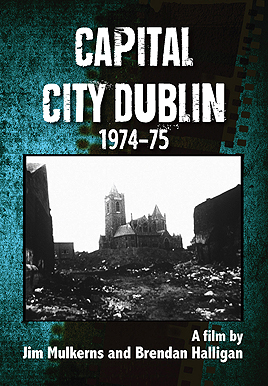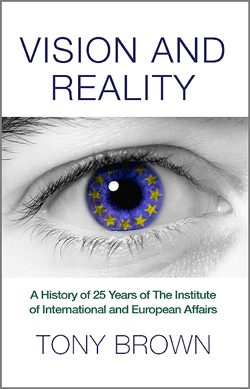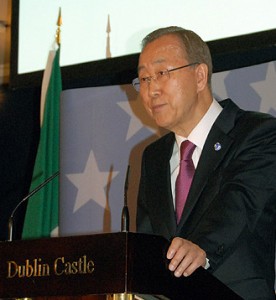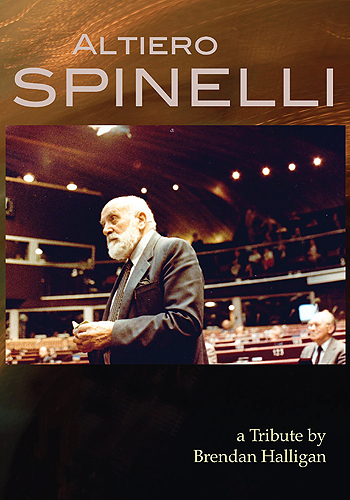WordPress database error: [You have an error in your SQL syntax; check the manual that corresponds to your MySQL server version for the right syntax to use near 'FROM wp_posts
WHERE 1=1 AND ((wp_posts.post_type = 'post' AND (wp_posts.' at line 2]SELECT SQL_CALC_FOUND_ROWS all
FROM wp_posts
WHERE 1=1 AND ((wp_posts.post_type = 'post' AND (wp_posts.post_status = 'publish')))
ORDER BY wp_posts.post_date DESC
LIMIT 0, 10
 A new version of Capital City Dublin 1974-75, a film by Brendan Halligan and Jim Mulkerns, was launched last Saturday, 5 November at the Irish Film Institute, and will be screened weekly as part of the Institute’s “Archive at Lunchtime” showings throughout the month of November, 2016.
A new version of Capital City Dublin 1974-75, a film by Brendan Halligan and Jim Mulkerns, was launched last Saturday, 5 November at the Irish Film Institute, and will be screened weekly as part of the Institute’s “Archive at Lunchtime” showings throughout the month of November, 2016.
The previously unreleased short film was made just over forty years ago, when Dublin looked more like a post-war European city in 1946 than a nineteen-seventies European capital. As Secretary of the Irish Labour Party in 1969, Brendan Halligan had originally commissioned independent film maker Jim Mulkerns to film the city as part of footage to be used for party political broadcasts. After filming more material for another party political broadcast in 1973, following which Labour came into power in the National Coalition Government, they worked together to produce a documentary, to show various public authorities with the idea of letting the images speak for themselves and prompt action.
For many years the film existed in silent celluloid only, under the preservation care of the IFI Irish Film Archive. Then, on the film’s fortieth Anniversary, Sunniva O’Flynn and Raelene Casey of the IFI Irish Film Archive facilitated conversion of a digital copy of Capital City Dublin 1974-75 for Scáthán, Halligan’s own publications and media imprint. Design and technical production on a new DVD edition was undertaken by Jim Mulkerns’s daughter Helena, whose company Cyberscribe created the 2016 titles and look.
Next came a new original soundtrack from musician Josh Johnston, who had previously worked with the IFI Irish Film Archive as a live accompanist for screenings of his Grandfather Denis’s film, Guests of the Nation. His score lends a haunting new aspect to the film.
The film with its new score will be screened alongside two other short films by Jim Mulkerns – An tOileánach a d’Fhill (1970) and Ireland Invites You (1966), as part of the Lunchtime Archive Screenings at the IFI throughout the month of November 2016.
The film can be purchased direct from Cyberscribe or at the film shop on the premises of the Irish Film Institute, Temple Bar, Dublin (01-679-5727). To watch the film exclusively on this website, click here.
 Brendan Halligan saluted a new book written by IIEA Senior Fellow Tony Brown yesterday at the Institute of International and European Affairs in Dublin. The launch of Vision and Reality – A History of 25 Years of the Institute of International and European Affairs was launched to coincide with the Annual General Meeting of the Institute, and was received with huge enthusiasm by Institute members and attendees at the event.
Brendan Halligan saluted a new book written by IIEA Senior Fellow Tony Brown yesterday at the Institute of International and European Affairs in Dublin. The launch of Vision and Reality – A History of 25 Years of the Institute of International and European Affairs was launched to coincide with the Annual General Meeting of the Institute, and was received with huge enthusiasm by Institute members and attendees at the event.
Halligan praised the book itself for its broad vision: that of capturing the history and development of the Institute in one comprehensive tome. Its seven chapters take us from the origins of the organisation through its actual founding, the nuts and bolts of its development and implementation, the progression of its concept of scholarship, dialogue and activism, the exploration of the many issues it has addressed, and its embracing of the new issues like Climate Change and the digital world.
He noted that “Vision and Reality” is commendable not only for its meticulous attention to detail, but its fine writing style, which allows the reader to enjoy and fully appreciate the depth and breadth of its subject. (more…)
Marian Finucane: … but first … a political story of particular importance to women. This week, for the first time, an elected representative of one of the three main political parties went on record as supporting the introduction of abortion into this country. The politician is Labour Euro MP Brendan Halligan, and he took the step when he voted in the European Parliament’s Debate on Women in Strasbourg on Tuesday. His action is likely to cause him  problems within his own party and is something bound to come up at the Euro elections in June. But this was only one amendment in a debate on women that was far-ranging and in the main constructive. Brendan Halligan, you are hot off the plane from Strasbourg having been at the Debate on Women of the European Parliament. How would you describe what took place there?
problems within his own party and is something bound to come up at the Euro elections in June. But this was only one amendment in a debate on women that was far-ranging and in the main constructive. Brendan Halligan, you are hot off the plane from Strasbourg having been at the Debate on Women of the European Parliament. How would you describe what took place there?
Brendan Halligan: Well, I described it in a speech as a very historic day for the European Parliament, it was the first time that I think any parliament anywhere in Europe has given an entire day – it was a very special session – to a debate on the situation of women. What the Parliament was debating was in fact a 550-page report that I have here on the table in front of me, which literally examined the situation of women in every aspect of life, within every country. It is to the credit of the European Parliament that it has done something that all the other parliaments have lacked the courage to do an do. I would suggest that the 550-page report exceeds anything that has been done by any research institute, sociological university or whatever. The debate itself is really saying that women are discriminated against in a whole variety of ways in this society, and that this must be ended, and it called on the ten member states to act in unison to take corrective measures. (more…)
It was this time around twenty years ago, with Robert Emmet’s 200th anniversary coming up, that I began to wonder, like many Irish people, about the death and burial of that singular Irish historical figure. The conundrum of the patriot’s last speech from the dock is rivalled only by the mystery of his final resting place. There are various theories, and while personal investigations, interviews with historians and even Emmet’s ancestors were fascinating, they were inconclusive. My research produced a series of illustrations that I was planning to use in a study of the subject, and while the study was never in fact completed, I would like to present them today to commemorate the birth of one of Ireland’s most remarkable rebels: Robert Emmet.
 On 25 May, 2015, Ban Ki-moon visited Dublin Castle for the launch of a programme that highlights Ireland’s contribution and commitment to the United Nations over the last 60 years. At the launch, co-hosted by the Institute of International and European Affairs and Ireland’s Department for Foreign Affairs and Trade, UN Secretary-General Ban Ki-moon delivered a lecture in St Patrick’s Hall entitled: The UN at 70: Looking back, Looking Forward.
On 25 May, 2015, Ban Ki-moon visited Dublin Castle for the launch of a programme that highlights Ireland’s contribution and commitment to the United Nations over the last 60 years. At the launch, co-hosted by the Institute of International and European Affairs and Ireland’s Department for Foreign Affairs and Trade, UN Secretary-General Ban Ki-moon delivered a lecture in St Patrick’s Hall entitled: The UN at 70: Looking back, Looking Forward.
At the event, attendees included former Taoiseach, Liam Cosgrave, who was Minister for External Affairs in 1955 when Ireland joined the United Nations; UN Special Envoy for Climate Change and former Irish President Mary Robinson; Minister for Foreign Affairs and Trade, Charlie Flanagan, TD, IIEA Chairman Brendan Halligan, Director General of the IIEA Tom Arnold and Jill Donoghue, Head of Research, IIEA, Peter Sutherland, United Nations Special Representative to the Secretary-General on International Migration and Richard Ryan, former Irish Ambassador to the UN in New York.
For full photographic coverage of this event, click here
 One of the founding fathers of the European Union, Altiero Spinelli was a co-author of the historic Ventotene Manifesto, an influential figure in the European federalist movement and later a member of the European Commission, and MEP.
One of the founding fathers of the European Union, Altiero Spinelli was a co-author of the historic Ventotene Manifesto, an influential figure in the European federalist movement and later a member of the European Commission, and MEP.
This paper explores the man, his personal story and his success as a European innovator and facilitator.
“It is proper to commemorate Altiero Spinelli when marking the sixtieth anniversary of the Schumann Declaration. Along with Monnet and Delors, he belongs in the European Pantheon dedicated to those who created and built the European Union of today.
He stands in the middle between these two great Frenchmen, for if Monnet gave life to the ideal of integration and nurtured it through its infancy, and if Delors was to steer it from adolescence to early adulthood, it was this great Italian who inspired the first and guided the second, and who led Europe at a moment of crisis on the passage from childhood to adolescence.
In his memoirs, Monnet reminds us that while institutions endure, nothing can be achieved without the individual, that special type of individual who puts their stamp on history and leaves the world a different place; in Spinelli’s case, a better world. Each of these three men, whose lives overlapped and intertwined, not only understood how the world of politics works, but more importantly, knew how to make it for the purpose of change, transformational change.
Interesting too, that while each was the product of his own intensely local culture, all three focused their intellects and energies on promoting the European ideal; none ever held the highest office in their country; and all three spent the latter part of their career exclusively devoted to European affairs.” … (more…)